

|
Friends of St Catherines Hill Steering Group Minutes Steering Group Terms of Reference Full Management Plan Summary Document Hydrology Report Hydrology Report Summary Public Consultation Summary to 20112004 DocumentsOriginal objection to the Hydrology ReportOur objections to the proposed felling by The Herpetological Conservation Trust Joint Submission to Forestry Commission |
St Catherine's Hill and Town CommonHistory on the Hill - Christchurch Remembered - Report 1History on the Hill - Christchurch Remembered - Report 2HISTORY DAY 2017Winter Management Works on St Catherine's Hill and Town CommonFriends win Heritage Lottery Fund bid - July 2017Update on the implementation of the Management Plan - April 2017
|
||||||||||||||||||||||||||||||||||||||
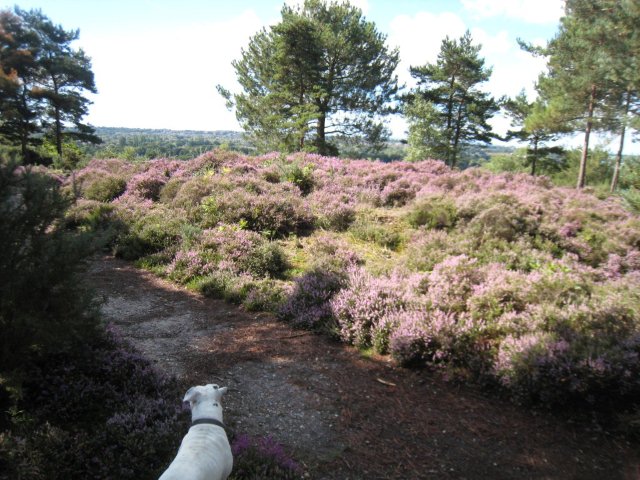
The Heathland Effect
Enlarge
|
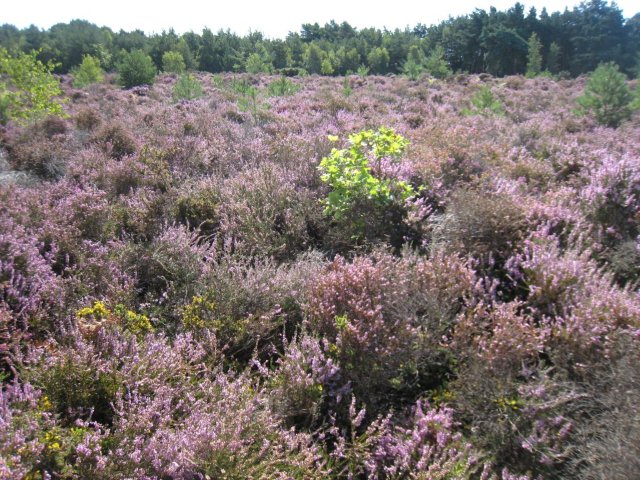
Heathland Corridor
Enlarge
|
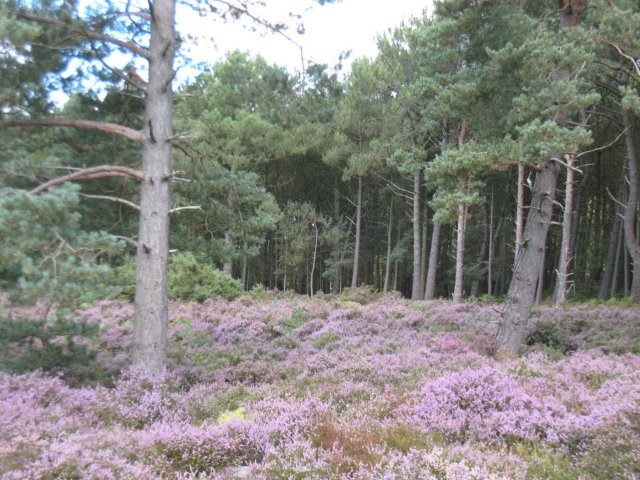
End of a Corridor
Enlarge
|
| Note the mixture of heather and free standing Scots Pine. This is the type of panorama that the naturalists are trying to create. | A corridor is a continuous band of heathland running between the trees. It forms a sort of highway for the wild life. Where dense thickets of trees block the corridor the naturalists will want to clear some of them and extend the corridor so that it links up with other corridors. | |
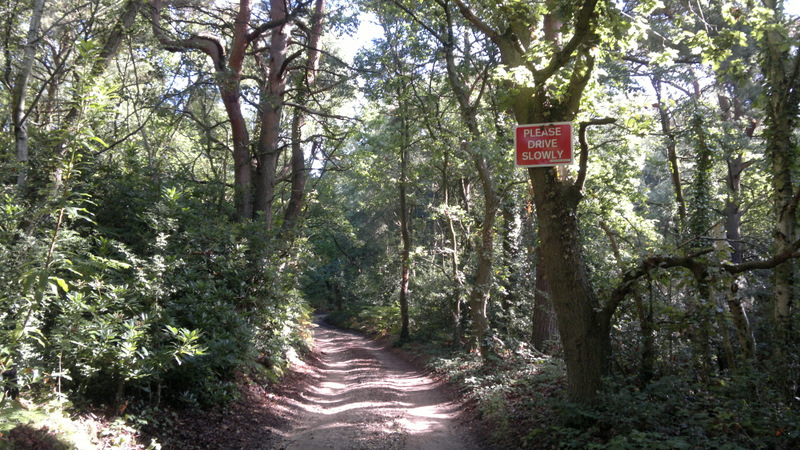
Sandy Lane
Enlarge
|
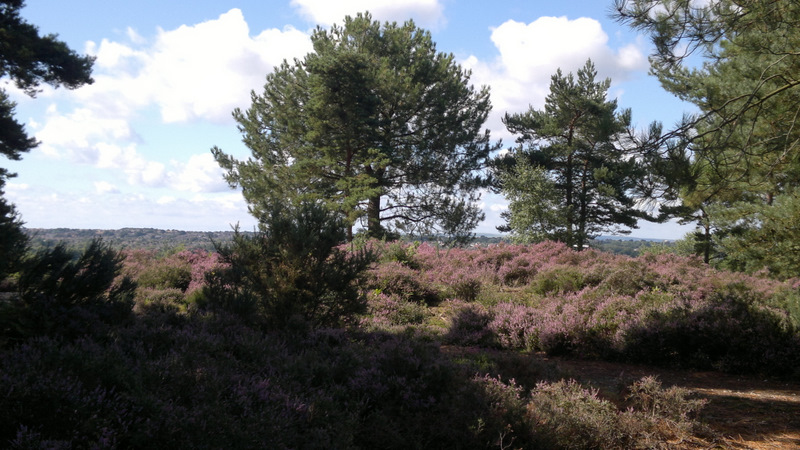
Scots Pines
Enlarge
|
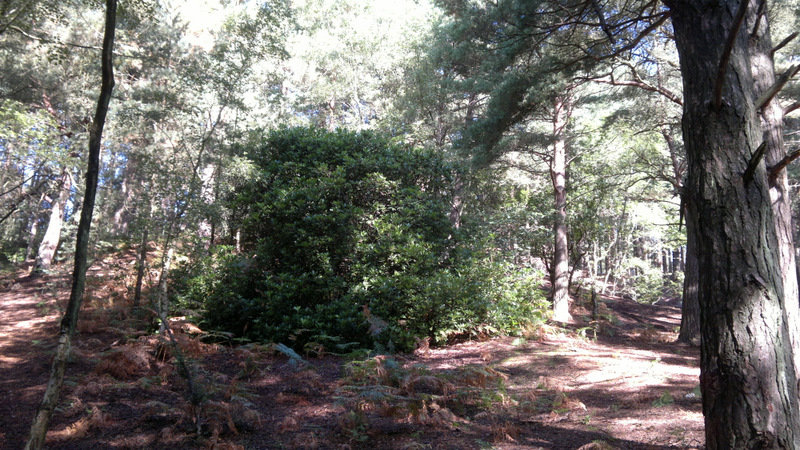
Invasive Species
Enlarge
|
| Access paths for humans are just as important as corridors for wildlife so the plan must address the issue of their maintenance | These are the pines that are native to the UK. Note how they have foliage from top to bottom and a reasonable spread as well. They are favoured over the Maritime Pines (see below) | The picture shows a rhododendron, probably the best known invasive species (apart from the Maritime Pine itself, which comes originally from Spain). The law of the land permits the removal of rhododendron without consultation but the plan will modify that by making special provision for rhododendron that form a natural barrier behind resident’s properties (as in Hillside Drive for instance) |
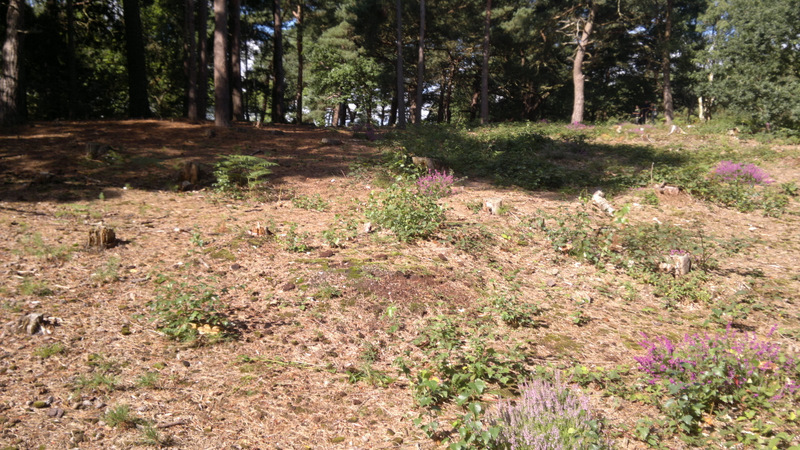
Bare Scrub
Enlarge
|
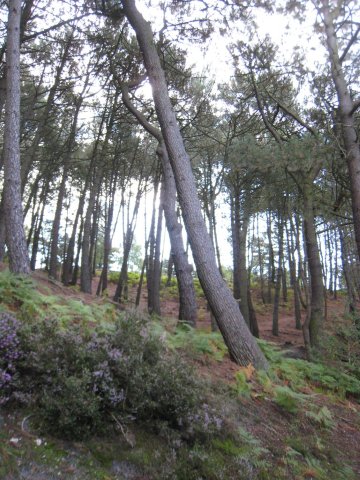
Unsafe Maritime Pine
Enlarge
|
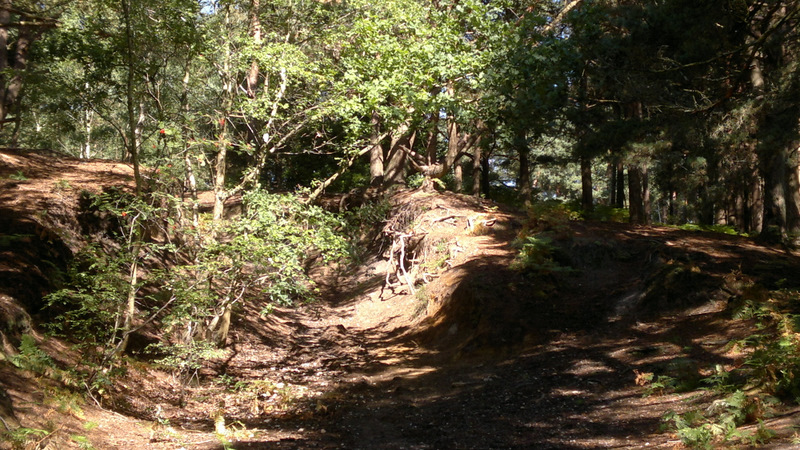
Erosion
Enlarge
|
| Some areas that were cleared of invasive trees in the past have not regenerated as they should have done. It’s not clear why that is. | In addition to the angle it is standing at note the differences between these pines and the Scots Pines. Tall and spindly they only have vegetation at the very top, which forms a dense canopy that shuts out light and hinders growth at ground level. Many of these pines are all of a very similar age and will all die at much the same time so some management action is required to mitigate this effect | A major problem on The Hill and one that the plan will have to address |
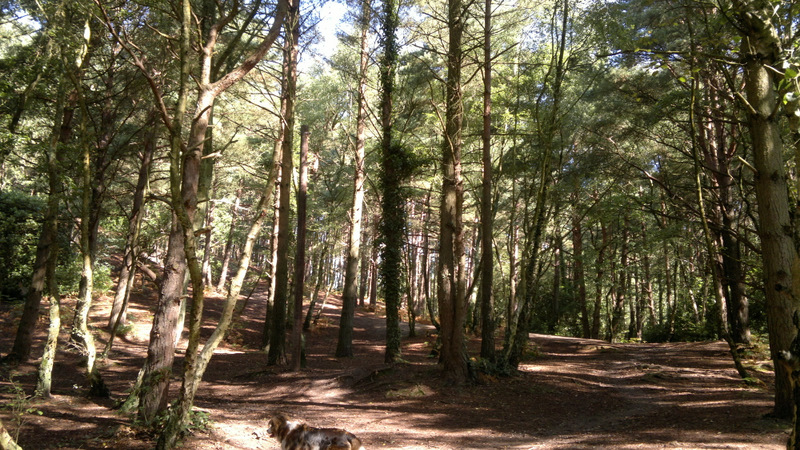
Management Required
Enlarge
|
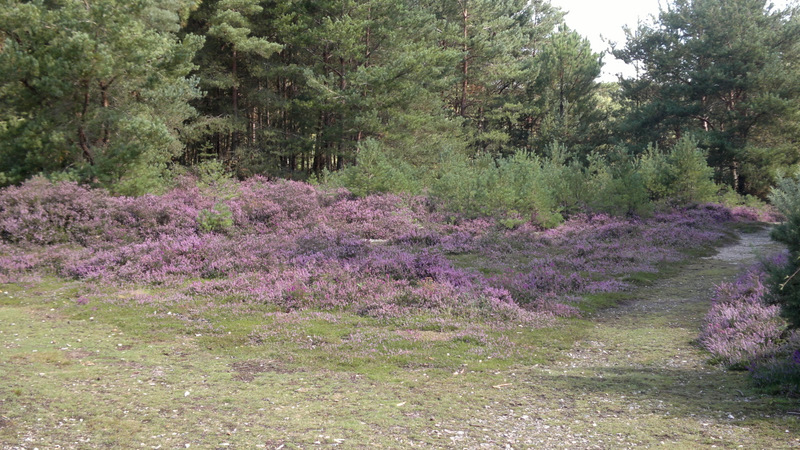
More Poor Management
Enlarge
|
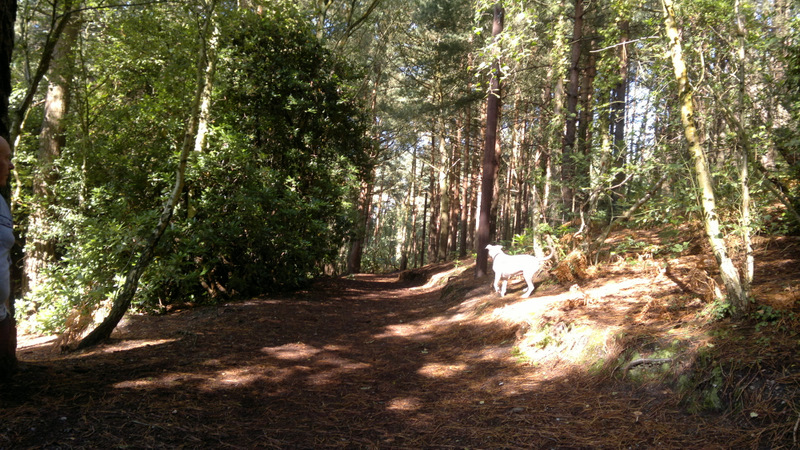
Fire Service Needs
Enlarge
|
| Note how good healthy trees have a number of spindly poor specimens mixed in amongst them. This is poor management. The removal of the weaklings assists the healthier specimens | Note how self-seeded Maritime Pines are growing in amongst the heather that they will eventually destroy. They should not have been allowed to grow in this way. | Some parts of The Hill may need to be adapted to facilitate
access for the Fire Service |
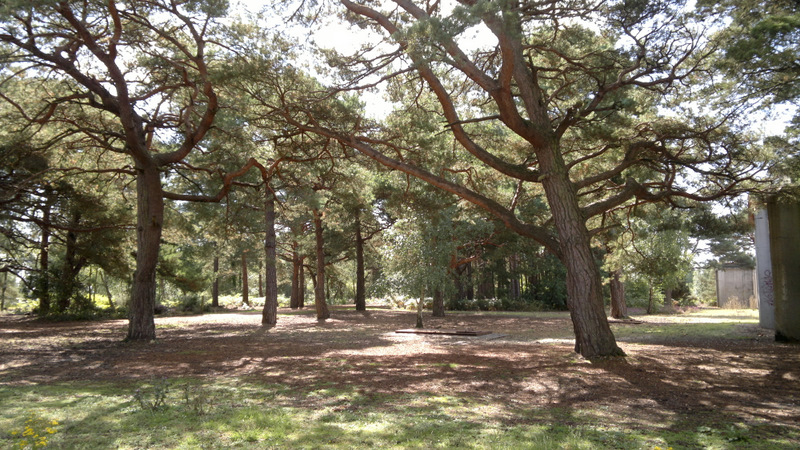
Tranquility
Enlarge
|
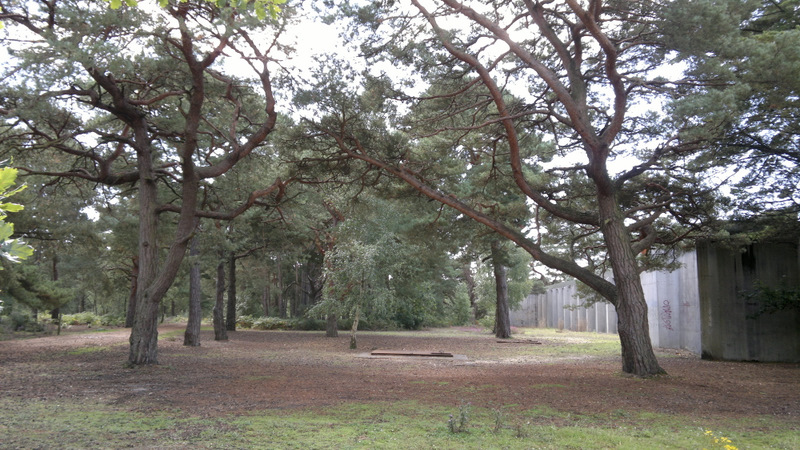
The Reservoirs
Enlarge
|

Radio Masts
Enlarge
|
|
Everybody, naturalists and residents, agree that this
feature of The Hill must be preserved. However, the woodland must be managed if
the ambiance is to be preserved. Left to their own devices, the trees
will simply take over.
|
We would like to see some effort made to improve the visual
impact of the reservoirs and the radio masts. We also think there is scope for
the owners to put up educational boards explaining how the local water system
works and is controlled from as far away as Longham and how the radio masts
link into the national network.
|
|
The far side of the hill after the ARC felling of winter 2011 |
|
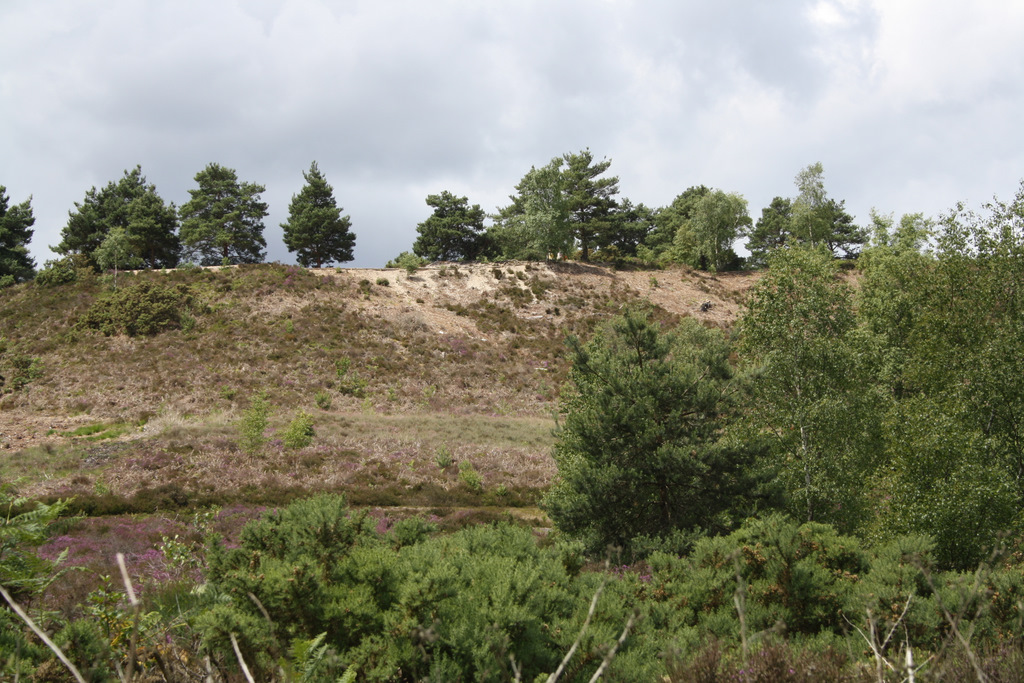 Enlarge
Enlarge
|
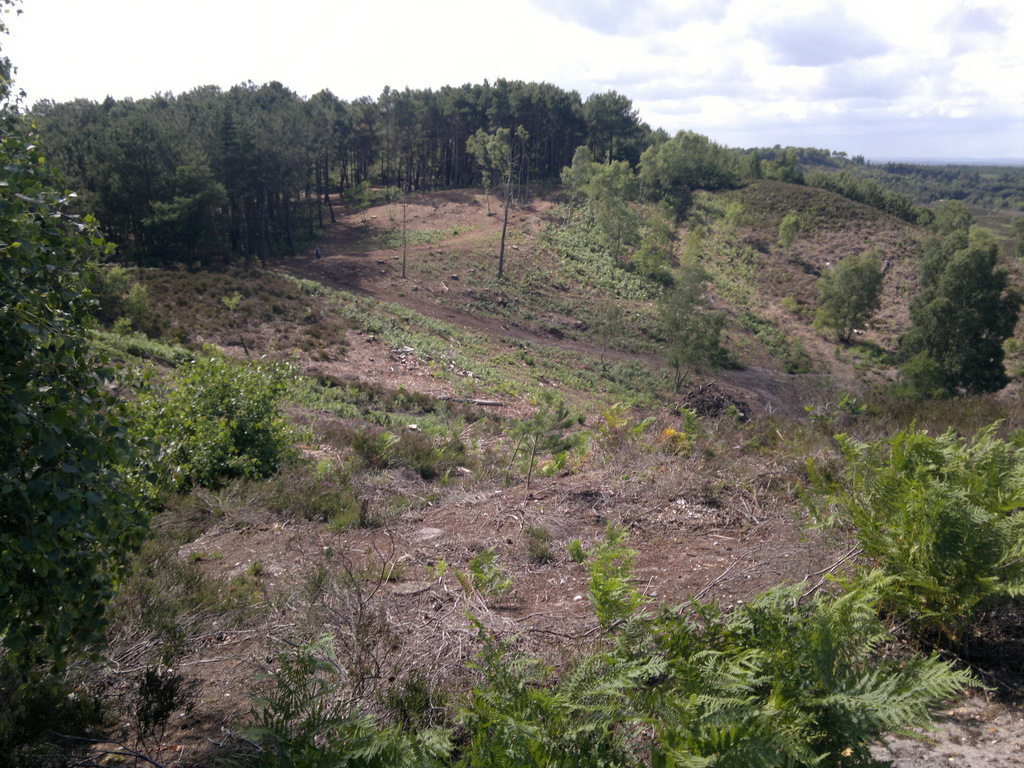 Enlarge
Enlarge
|
Local Resident’s Letter to Bournemouth Echo 28th July 2011 (Reproduced here with the Resident's permission)
ST CATHERINE’S Hill, Christchurch, is tipping the balance of nature in favour of sand lizards.
Earlier this year, in an effort to extend heathland for sand lizard breeding etc, the powers that be decided to chop down the majority of mature pine trees on the north east slopes of St Catherine’s Hill.
To get to these pines, they employed a JCB to run roughshod over existing heathland, slashing down heather and gouging out paths and banks, with no regard for wildlife; turning heathland sheep tracks into a criss-cross of access highways for heavy vehicles.
Work continued well into April in spite of their own rule – ‘Do not disturb ground nesting birds from March onwards’!
The consequences for Nature: Fast eroding slopes where heavy vehicles have scoured the hillside. Public can now tramp at least four new tracks up and down these cleared slopes and kids on mountain bikes are finding exciting new ziz-zag tracks down the hill.
Hundreds of seedling, pine and birch trees ploughed into the ground are sprouting up everywhere and a new thriving sea of bracken awaits the poison sprays.
Nesting Stonechats are gone from disturbed heathland. Deer have vanished. Cuckoos did not return to the hill this year. Banks of Sunden colonies have been destroyed, and who knows what happened to ‘in the way’ hedgehogs and nesting owls.
So, nature, thoroughly disturbed, not by kids or bike, or does or horses, but by so called conservationists.
By the way, adders seem more numerous on the undisturbed heath this year, as lizards are part of their diet. Where will this ‘Save the Cute and The Rare’ hypocritical meddling with nature stop?